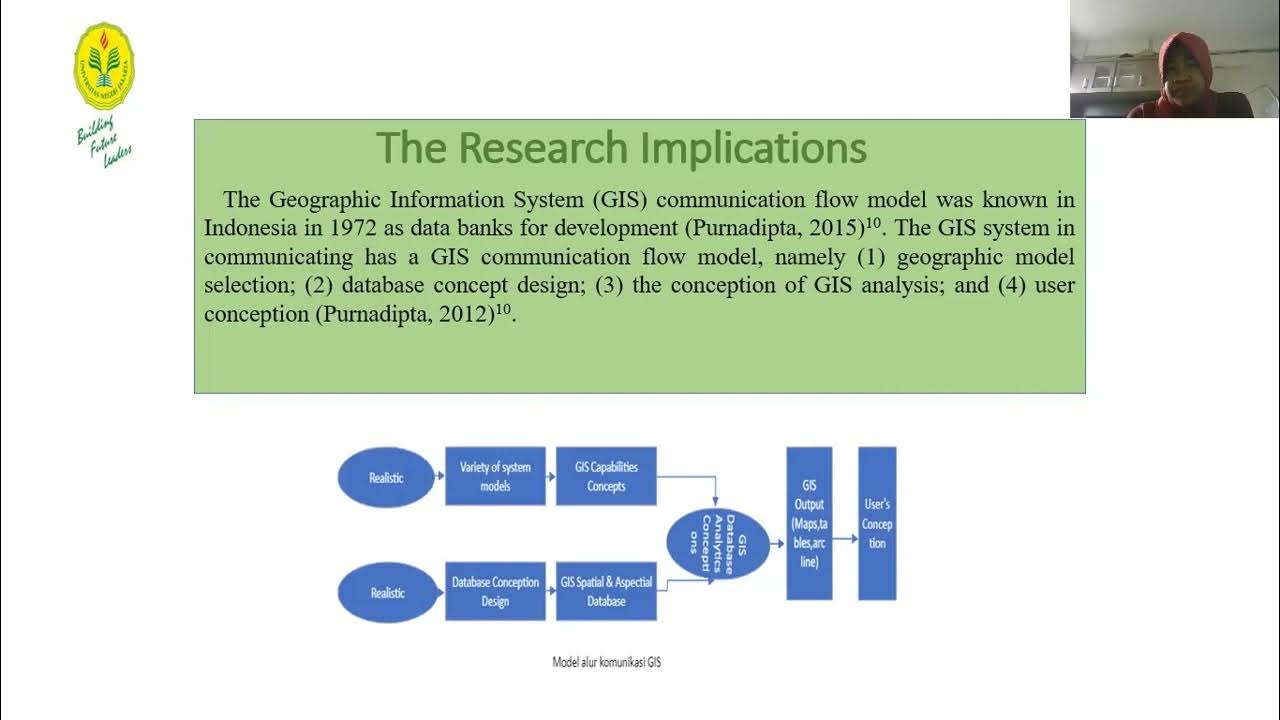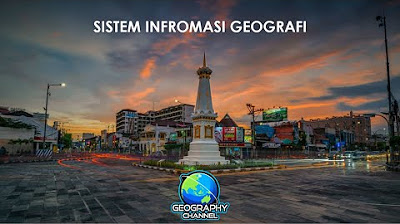Pemanfaatan SIG untuk kajian Kesehatan Lingkungan
Summary
TLDRThis video explains the use of Geographic Information Systems (GIS) in environmental health studies. It covers the application of GIS for mapping and analyzing disease zones, health facilities, and child nutrition status. The video also explores spatial modeling techniques like binary models, index models, regression models, process models, and network models, all of which are utilized to analyze geographic data and improve decision-making in environmental health and urban planning. By integrating various data sources, GIS helps in efficient resource allocation, health interventions, and infrastructure development for better community well-being.
Takeaways
- 😀 GIS is a tool used for mapping and analyzing activities on Earth's surface, assisting organizations and individuals like universities, government agencies, and military.
- 😀 GIS is applied in environmental health studies to map disease zones caused by mosquitoes, such as dengue, malaria, and chikungunya, helping target health interventions.
- 😀 GIS can map urban health zones to assess the quality of residential areas, identify areas requiring improvements, and prioritize environmental health measures.
- 😀 Spatial data from GIS can help map health facilities like hospitals, clinics, pharmacies, and doctor's offices, enabling people to easily locate the nearest service providers.
- 😀 GIS aids in the mapping of child nutritional status, helping address malnutrition by providing spatial information on children's health for targeted interventions.
- 😀 Spatial modeling in GIS simplifies real-world phenomena to help understand, illustrate, or predict phenomena, such as health risks or environmental conditions.
- 😀 GIS combines various types of data, including maps, GPS, satellite images, and databases, for comprehensive spatial analysis and decision-making.
- 😀 Spatial models in GIS can be vector or raster-based, depending on the data and computational algorithms used for analysis.
- 😀 The Binary Model in GIS uses true/false logic and overlays maps with attribute data to detect changes and help with basic analysis.
- 😀 The Index Model assigns scores to variables, creating hierarchical maps for vulnerability or suitability analysis, and uses linear equations to aggregate scores and weights.
- 😀 The Regression Model in GIS applies regression equations to predict trends in phenomena, often used for raster data, enabling trend forecasting and analysis.
Q & A
What is the main focus of the script?
-The main focus of the script is the utilization of Geographic Information Systems (GIS) in environmental health studies, specifically in mapping, spatial analysis, and improving public health policies.
How does GIS contribute to analyzing disease-prone areas?
-GIS helps in mapping disease-prone areas, such as those affected by mosquito-borne diseases like dengue, malaria, and chikungunya, enabling better monitoring and targeted health interventions.
What role does GIS play in improving urban health and environmental quality?
-GIS is used to create zonation maps that assess urban health and environmental quality, helping to prioritize areas for improvement in residential zones and ensuring better health standards.
How does GIS assist in mapping health facilities?
-GIS allows for the spatial mapping of health facilities, helping communities easily locate and choose appropriate hospitals, clinics, and pharmacies based on the services provided.
Why is it important to map the nutritional status of infants using GIS?
-Mapping the nutritional status of infants through GIS helps in identifying areas with malnutrition, enabling more accurate public health interventions and policy decisions to address and improve child nutrition.
What are the five models used in GIS for environmental and regional planning?
-The five GIS models used for environmental and regional planning are: Binary Model, Index Model, Regression Model, Process Model, and Network Model.
What is the Binary Model in GIS, and how is it used?
-The Binary Model is a simple GIS model that uses binary logic (true or false) and is commonly used for detecting changes in land use or environmental conditions through overlay analysis.
How does the Index Model function in GIS?
-The Index Model assigns scores to categories or classes to create multi-layered maps, with each variable evaluated based on its importance, and is typically used in suitability analysis and vulnerability assessments.
What is the purpose of using the Regression Model in GIS?
-The Regression Model in GIS uses mathematical equations to identify trends or relationships between variables, helping to predict and estimate phenomena based on historical data.
What is the significance of the Network Model in GIS?
-The Network Model in GIS focuses on geographic networks, such as roads, rivers, and utilities. It allows for analyzing the flow or movement of resources within a network and solving logistical or infrastructural problems.
Outlines

Cette section est réservée aux utilisateurs payants. Améliorez votre compte pour accéder à cette section.
Améliorer maintenantMindmap

Cette section est réservée aux utilisateurs payants. Améliorez votre compte pour accéder à cette section.
Améliorer maintenantKeywords

Cette section est réservée aux utilisateurs payants. Améliorez votre compte pour accéder à cette section.
Améliorer maintenantHighlights

Cette section est réservée aux utilisateurs payants. Améliorez votre compte pour accéder à cette section.
Améliorer maintenantTranscripts

Cette section est réservée aux utilisateurs payants. Améliorez votre compte pour accéder à cette section.
Améliorer maintenantVoir Plus de Vidéos Connexes
5.0 / 5 (0 votes)






